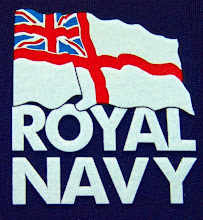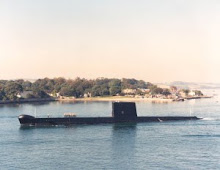History of the British Nuclear Arsenal
[...]Polaris Warhead
There is some confusion about whether there were really two Polaris warheads (that is, "physics packages") or only one. The initial deployment of the three warhead A3T Polaris SLBM was accompanied by the production and deployment of a British-produced warhead, apparently a version of the American W-58 200 kt warhead deployed on the U.S. Polaris A3. Later an update of the Polaris missile force, known as the Chevaline program, was carried out with the modified missiles being re-designated the A3TK. This update included a new bus (upper stage), new RVs, and a sophisticated penetration aid (decoy) package. It is not completely clear whether the existing Polaris warheads were simply repackaged, or whether a completely new model was introduced. Due to Britain's limited weapons development and production capacity it seems likely that the warheads used to equip Chevaline, were based on the preexisting Polaris warheads.
Immediately after the 10 June 1963 decision by the British Admiralty to acquire the next-generation A3T Polaris SLBM (in preference to the A2 version then deployed by the U.S., Aldermaston began full-scale developmental work on the Polaris warhead. The design is said to be completed in the spring of 1966, with production beginning in 1966 or 1967. The "developmental" and "design" work associated with this warhead presumably involved adapting the already proof-tested American W-58 warhead to manufacture in a British plant. The warheads were deployed in Mk-2 RVs purchased from the U.S.
The Polaris A3 was the first multiple warhead missile, equipped with three MRVs (multiple re-entry vehicles). The MRVs were dispersed around a central aiming point, they were not independently targeted. Four Polaris subs of the Resolution class were deployed, each with 16 missiles. It is believed that only 144 warheads (plus possibly some spares) were manufactured, enough to equip three subs at a time. The fourth boat was in port for maintenance and refitting at any given time.
352x261, 20 KHMS Resolution Two mid-life update programs were instituted for the Polaris missile.
[...]
More here:
Polaris firing
Resolution was also the first British submarine to fire a Polaris missile. This took place during a trial off Cape Kennedy in Florida on 15th February 1968. Chief Executive Hugh Mackenzie noted when the Polaris project launched that the first missile from a British submarine would fire at 11.15 Eastern Standard Time on 15th February 1968. Resolution was indeed ready by that date to fire the missile at the US Air Force Eastern Test Range. She only failed to meet the designated firing time by 15 milliseconds.
Missile compartment onboard HMS Resolution (RNSM)Polaris patrol
The submarine's first Polaris patrol commenced in June 1968.
On going out on a patrol, a hunter/killer submarine or helicopter initially escorted the submarine in case she was being trailed by Soviet submarines. Once Resolution reached the open sea, she dived and headed for a secret patrol location known only by a handful of senior officers and the Prime Minister. The submarine could receive signals broadcast from its base in ultra low frequency waves using an aerial towed behind the boat.
Control room of HMS Resolution, 1976 (RNSM)Resolution was fitted with a PWR1 nuclear reactor, which enabled the submarine to achieve a speed of 25 knots while submerged. However, since stealth was Resolution's prime consideration whilst on patrol, she was more likely to travel quietly at just a few knots as this created less disturbance below the waves.
















.jpg)






